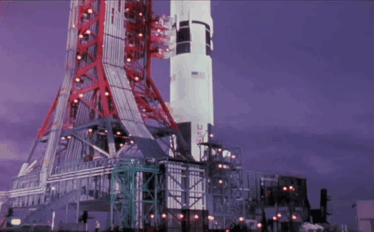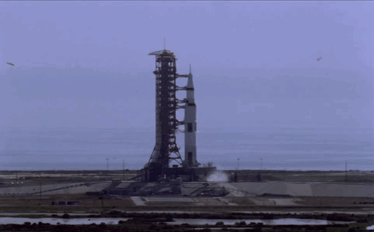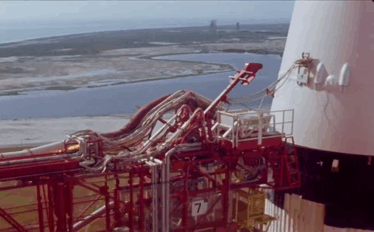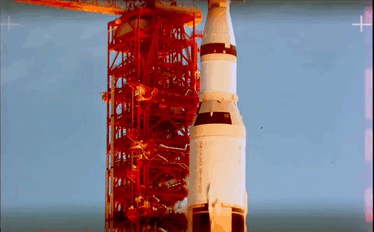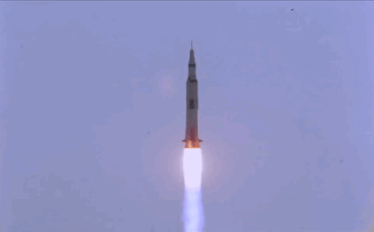Origins is One Of My Favorite Documentaries Of All Time. Neil DeGrasse Tyson Does A Marvelous Job Of
Origins is one of my favorite documentaries of all time. Neil deGrasse Tyson does a marvelous job of narrating a story interwoven with strong scientific evidence, great artistic visuals, and immersive story-telling. While Origins is an old documentary (first shown in 2004), many of its content is still applicable today.
One of my favorite aspects of Origins is its ability to explain to the viewer why understanding the start of our universe is important. Often times, the answer to “How did life start?” is filled with complex scientific concepts and theories. Origins breaks down these complicated explanations into points that anyone can digest. I highly recommend it to any space enthusiast out there.
More Posts from Catchconstellations-blog and Others

A Quick Q&A
Ever my first post, I’ve had some great comments and questions from people who’ve stopped by my blog, and I’m going to respond to them all in this post to keep things organized!
---
Q1: In reference to the Emirates’ plans to build a Mars city by the end of the century - do you think they can do it? (question by krrizal)
A: I definitely think anything is possible. With the current rate of technological advancements and rise of interest in space exploration globally, I think there is a lot of support for those who want to go space - and more specifically Mars. Really, there has never been a better time for space to take the forefront of global topics. If Emirates stays on track with their plans, I believe they can build a city on Mars.
---
Q2: cute theme! where did you get it from? (question anonymous)
A: Hello! The theme is made by this wonderful person, I just added my own code to it for editing and personalizing purposes.
---
Q3: lol high 5 from UCF! (comment made anonymous)
A: Go Knights! :D
---
Q4: Do you have any experience working in space?
A: I wish! I am doing undergraduate research right now in the field of environmental engineering, since I also want to go into sustainable energy. I’m waiting on internship responses from NASA, so fingers crossed! My dream is to do astrobiology research in space and sustainable urban development down on Earth.
---
Thank you everyone for your questions and comments! Please feel free to stop by my ask box at any time.

First Discovery of Atmosphere on Known Exoplanet
While news of Trappist-1′s potentially inhospitable environment made its way through the news feeds, a new discovery emerged to make up for it: an existing atmosphere on exoplanet GJ1132b.
Located 39 light years away (just around the corner in galactic terms), the exoplanet is similar to Earth in size and mass, and is in close-orbit to its star: a dim red dwarf just slightly cooler and smaller than our own Sun. It was discovered in 2015, but it’s only now that scientists have been able to take a closer look at its composition.
While the distance between GJ and its host star is more similar to the one between Venus and our Sun, therefore most likely rendering the exoplanet incapable of hosting life due to extreme surface temperatures of up to 370 degrees Celsius/700 degrees Fahrenheit, the most important aspect to focus on is the discovery is the atmosphere that exists on GJ.
Using advanced technology that picks out biochemical signatures such as those of oxygen, methane, and hydrogen, scientists have identified a thick atmosphere of either steam or methane surrounding GJ. While this is not a certain indicator of life, it is an crucial step in increasing our knowledge of potentially habitable alien planets out there.
It is definitely interesting to see that scientists have found the first alien atmosphere that isn’t Earth’s. It seems that many of the Earth-like planets scientists have discovered are inclined to orbit red dwarf stars like Earth and that of GJ1132b. I wonder if we specifically target finding red dwarves, will wel increase our chances of finding more and more Earth-like exoplanets that could be capable of having life? It’s something to think about as we continue moving into the future.
List of Online Resources
Over the past week I’ve been compiling a short list of online resources I often use when I’m doing anything space-related online, whether it be writing summaries of news updates or trying to understand some complicated science topic. Hope these are useful!
On getting up-to-date news:
ScienceDaily
Space.com
Science Mag
On understanding scientific topics:
Crash Course
Khan Academy
Space Exploratorium
Of course, there are many resources out there, but these are the ones I use most often.
Beautiful! Would like to visit all of these places someday <3









World’s largest salt flat: Salar de Uyini, Bolivia
Catch Constellations
Hello everyone! My name is Dianne and this is my blog on everything space related! While I am currently writing more about news updates and what’s currently going on in the space world than anything else, I hope to branch out - catch other constellations, so to speak - and contribute more content such as quotes, commentaries, videos, explanations of scientific concepts, and more.
I created this blog not only because I wanted to share my love for space with anyone who happens to find this little corner of the internet, but also because I wanted to do it in a way that isn’t too techno-jargon-filled or confusing. As a STEM major, I know how confusing trying to understand complicated scientific concepts can be, and that’s why I’ll do my best to make sure everyone and anyone can enjoy my posts!

A little bit about me:
- I’m currently a sophomore at the University of Central Florida, studying biotechnology and planning to enter the astrobiology/sustainable energy fields one day.
- I love space, which may seem obvious given this blog, but it is sincerely one of my life goals to become an astronaut and go beyond Earth. It has been ever since I was a little girl. There is so much out there that we don’t know, that we can explore, that we can learn from!
- When I’m not studying or planning to take over NASA, you can find me writing and journaling, buried in a book, singing my lungs out to Disney songs or Broadway soundtracks, or generally doing a bunch of nerdy stuff.
- Rapid fire personality points! INFJ + Hufflepuff + Virgo
Alright! This will be it for my first blog post. I’ll be back soon with updates on some really cool space news. Until then, ad astra!

Extraterrestrial Life May Be Closer Than We Think
Just when we think we have the universe somewhat figured out, it throws us a massive curveball from our very own backyard. Hold on to your telescopes, everyone, because one of our own planetary neighbors right around the corner may have the right conditions for extraterrestrial life.
On April 14, a paper published in Science Mag pointed out biochemical signatures of hydrogen production in the hydrothermal reactions in the form of plumes that erupt from the ice surface of Enceladus, one of Saturn’s moons. Molecular hydrogen is one of the building blocks of life because it is the ideal food source for microbes and bacteria, which are at the forefront of every food and energy chain (at least on Earth). This implies that the ocean beneath the ice has enough chemical activity and organic matter to maintain the right conditions to sustain life, at least on the molecular level. This kind of chemistry can indicate habitable zones in Enceladus’ ocean.
To provide a bit of a context from here on Earth: our own oceans contain deep-sea hydrothermal vents that are home to complex and important ecosystems that allow microorganisms to live and grow by using energy from the minerals produced by these vents. These microorganisms are necessary for food and energy chains to form since larger organisms feed on these microorganisms and create entire ecological communities. Many scientists have pointed out these kinds of superheated environments as prime locations for life to begin.
But having the right conditions for life doesn’t mean already harboring life. There is still a lot that we don’t know about what’s going on below the surface of Enceladus. While scientists have known about its ocean since 2005, it is only now that technology has improved to the point where it can pick up sensitive biochemical signatures and provide a more detailed picture of Saturn’s icy moon.
Recently, NASA has announced a mission called Europa Clipper that will explore Europa, another one of Jupiter’s icy moons with an ocean. It will launch sometime in the 2020s. Perhaps NASA will consider stopping by Enceladus...who knows what we can find there?
Let me start off by saying that I think Crash Course is a great resource for people who want to get the basic details of any subject the creators offer. CC’s series for astronomy is particularly wonderful. The science behind astronomy and space can be mind-boggling due to the complexities of physics, mathematics, photonics, and other relevant subjects; CC makes it easy and fun to learn about astronomy without being too technical or in-depth. Great series of videos if you have time to check them out!
CONSTELLATION: (noun) Group of stars that form a recognizable pattern to which a mythological or earth-based name is assigned Pattern of stars whose name or is associated with different stories and meanings Story told by stars connected across the infinite night sky, overlapping with countless other stories that have unfolded from ancient supernovas, whose imaginary lines urge our eyes up from the chaos of the world around us to the unknown vastness in which we are but a speck of dust -------- Hi! I’m a starry-eyed astrogeek named Dianne who loves absolutely everything that has to do with the stars and outer space. When I’m not studying or preparing to take over NASA one day, you can find me trying to stargaze despite city lights or happily planning my next road trip.
35 posts

